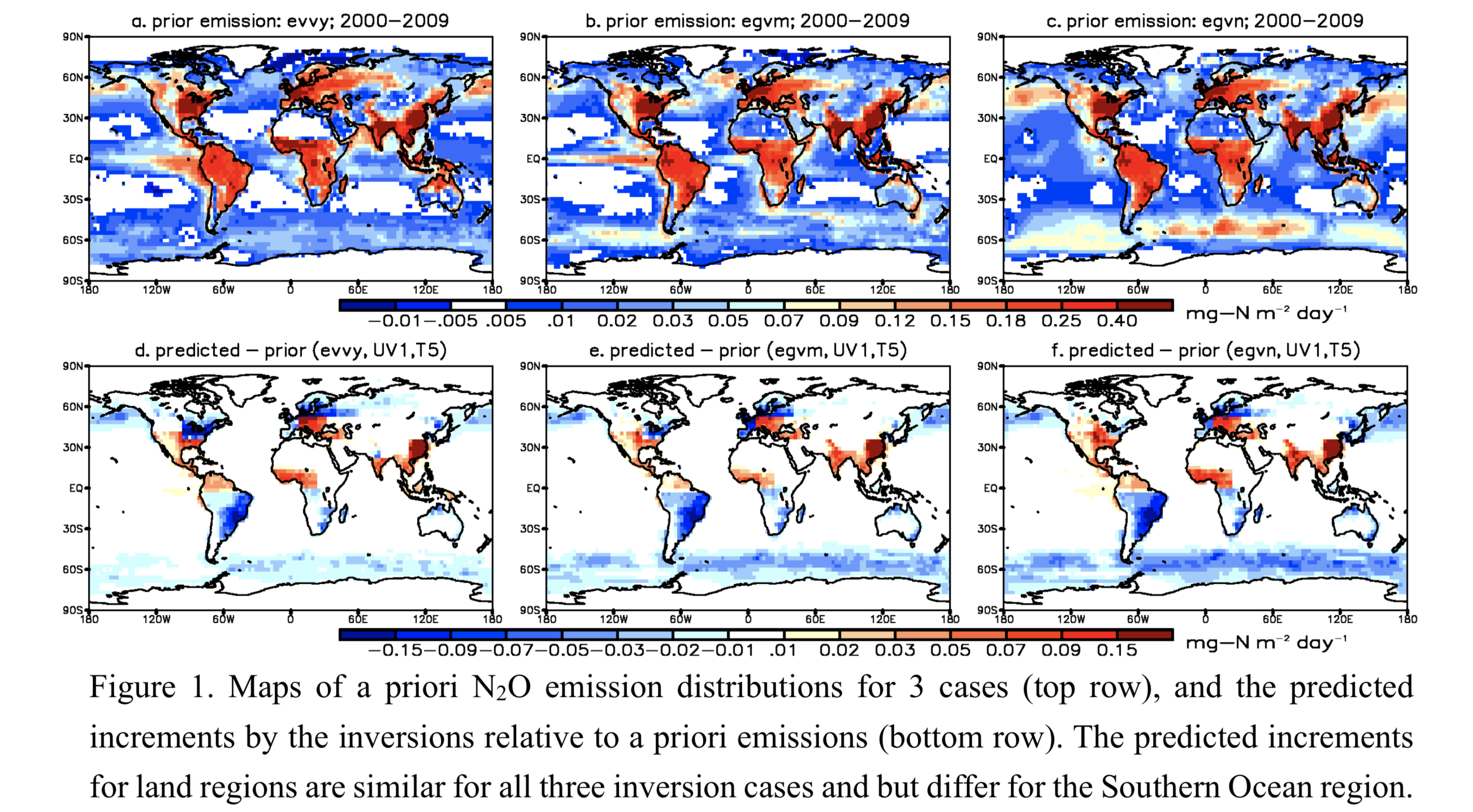Graphical Abstract
Patra, P. K., E. J. Dlugokencky, J. W. Elkins, G. S. Dutton, Y. Tohjima, M. Sasakawa, A. Ito, R. F. Weiss, M. Manizza, P. B. Krummel, R. G. Prinn, S. O'Doherty, D. Bianchi, C. Nevison, E. Solazzo, H. Lee, S. Joo, E. A. Kort, S. Maity, and M. Takigawa, 2022: Forward and inverse modelling of atmospheric nitrous oxide using MIROC4-atmospheric chemistry-transport model. J. Meteor. Soc. Japan, 100, 361-386.
https://doi.org/10.2151/jmsj.2022-018.
Graphical Abstract
Published
Plain Language Summary: Atmospheric nitrous oxide (N2O) contributes to global warming and stratospheric ozone depletion. Here we aim to better estimate the global and regional N2O emissions from different sources using high-quality atmospheric observations, JAMSTEC’s atmospheric chemistry-transport model (MIROC4-ACTM) and known (a priori) N2O emissions due to natural soil, agricultural land, other human activities and sea-air exchange. Regional N2O emissions are optimised by Bayesian inverse modelling for 84 partitions of the globe at monthly intervals for the period 1997- 2019. Our best estimate global land and ocean emissions are 14.30±0.20 and 2.91±0.27 TgN yr-1, respectively, for 2010-2019 (2010s), corresponding to N2O lifetime of about 127 yr.
Highlights:
- Global land and ocean emission variabilities show significant correlation with El Niño Southern Oscillation (ENSO). Global land emissions increased by 10% in 2010s from 13 TgN yr-1 in 2000s.
- The most recent ocean emission estimation (Fig. 1a), with lower emissions in the Southern Ocean regions, fits better with that predicted by the inversions, i.e., lower increments (Fig. 1d).
- Regional land emissions show increases over much of the America, Central Africa, and Asia regions between the 2000s and 2010s. Only Europe and Japan recorded a slight decrease in N2O emissions.







